I went from no garden to a huge garden. Here’s what I've learned
Plus, the ultimate spring pasta recipe, laden with wild greens (or spinach foraged from Lidl). It’s a long one so grab a cuppa…
That’s it, I’m calling it. Gardening Bore 2025 is officially underway. *Blows party whistle* What’s Gardening Bore, you ask? It’s an annual tradition in which I:
Throw myself enthusiastically into sowing too many seeds across February, March and April.
Waft through the veg garden on an hourly basis across May and June, fingering plants and wanging on about how much I love gardening.
Start to get a bit tired of the weeding in July. Begin to see the benefits of a ‘low-maintenance’ garden. (Ours is gloriously high maintenance.)
Complain about having too many courgettes in August. Beg people for courgette recipes.
Give up weeding altogether in September and pretend not to notice the bindweed and creeping cinquefoil.
Harvest my dozens of butternut squash and arrange them in descending order of size, like the Type A nutcase I am, sometime in October.
Retreat into the house in November and forget about the garden for months until I…
Start the whole process again in March with the wide-eyed enthusiasm of a simple child with a short memory.
You know that bit from Captain Corelli’s Mandolin that goes, ‘Love is a temporary madness; it erupts like volcanoes and then subsides’? That’s me and gardening – it’s a temporary but intense state of hyper-fixation that grips me every year.
To (quickly) bring you up to speed on our gardening journey.
If you’re new here, when we bought our Bulgarian village house it came with a large (quarter-acre) garden – complete with some grass, a few mature trees and not much else. Over the years, we’ve added a veg patch and flower garden, a whopping seven-metre-long greenhouse made from salvaged windows, a wildlife pond, and a summer kitchen with homemade cob pizza oven.
We’re obsessed with our garden. True, we’re not expert gardeners, and there’s been a lot of trial and error over the years (emphasis on the ‘error’). We never had a garden in the UK – just a patio outside our basement flat with one potted plant. (Can’t remember what the plant was. All I know is we used it to weigh down the small drainage grate in the middle of the patio, because I once saw a rat poke its giant wet head – almost as big as a beaver, I swear – up from under the grate.)
So, we have no training, and no experience beyond this Bulgarian garden. But what we lack in, you know, actual skills – and, in my case, upper body strength – we more than make up for in enthusiasm. If ‘enthusiasm’ means watching old episodes of Garden Rescue on YouTube and trying to figure out which one of the Rich brothers I fancy more…
(It’s clearly David. No wait, it’s Harry.)
Gardening Bore 2025 kicked off with all the usual seed sowing.
So far we’ve sown:
In February: parsley; kale; broad beans; lettuce; and tomatoes (100 ish plants across 6 varieties – did I mention we have a massive greenhouse?)
In March: more lettuce (the first lot failed); chard; beetroot; climbing beans; dwarf beans; and nasturtiums (which I grow as a salad crop)
Still to sow in April:
Squash and courgettes
Fennel (I had no luck growing fennel bulbs last year, but the fronds were nice and lasted right through to January)
Sweetcorn
(Btw, if anyone wants to know varieties of anything, comment and I’ll dig out my seed packets. I buy almost all of them from Real Seeds.)
Things I no longer bother growing from seed:
Chillies (in May, at the local market, we can buy bare-root bundles of good-sized chilli plants – usually 20 plants in a bundle – for around 2 leva. That’s less than £1!)
Basil (ditto, I buy established plants at the market for silly cheap)
Edible perennials and trees in the garden:
Various fruity things: rhubarb (yes, I know it’s technically a vegetable, bugger off); raspberries; strawberries; blackcurrants; and blackberries
Asparagus
Various herbs
Wild garlic
Welsh onions
And a few fruit/nut trees (including walnut, apple, pear, loads of plums…)
Plus lemons and limes in pots (but they’re looking very ropey after this winter)
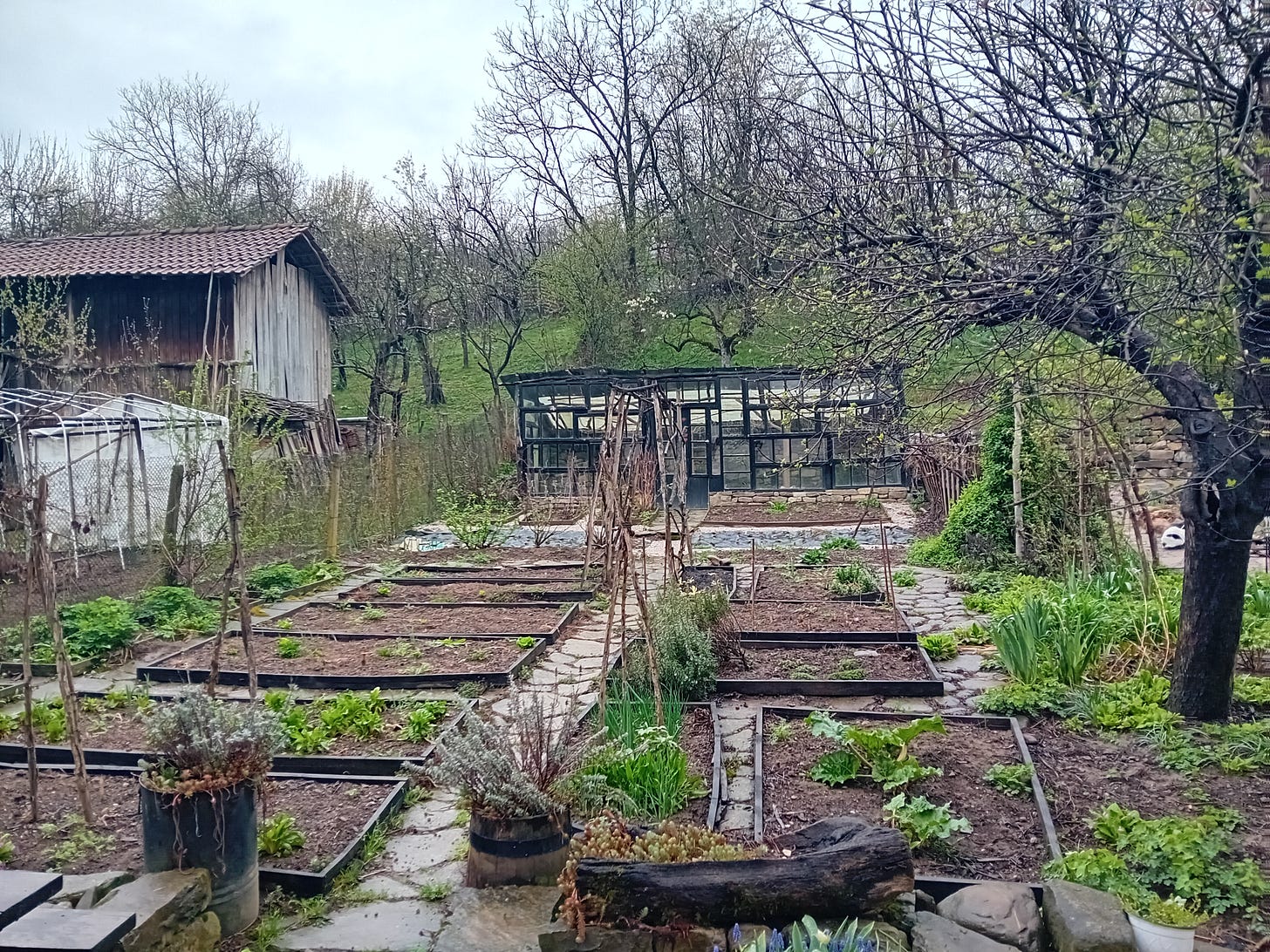
It’s not too late to sow seeds.
I know it can feel like you’ve missed the boat because it’s already April. But it’s not too late to sow seeds, either in the greenhouse or on a windowsill. Or, wait a few weeks for the soil to warm up and you can merrily throw seeds straight in the ground. And if you don’t fancy that, buy some plug plants or ask a gardening friend for any surplus plants (there are always surplus plants).
Now, onto some gardening lessons.
Having gone from no garden to a vast garden, there are a few things I’d tell my younger self – the 30-year-old who inherited what was then a blank canvas (apart from the trees). Whether you have a tiny garden, a big garden, or just dreams of a garden one day, this might help you out.
For the love of
GodMonty Don, decide what trees you want to plant and plant them in your first year. I know the instant gratification of annual vegetables is, well, gratifying, but focus on getting the big stuff – the stuff that will take years to mature – in first.Really think about where those trees go. Think long term. Are you likely to expand your veg patch in a few years and therefore have to move a tree? (Which can be done, but it’s a ballache for both you and the tree. Our poor peach tree has been moved three times.)
Same goes for shrubs and hedging. Think about the structure of the garden and where you want your year-round structural plants, statement plants, focal points, or plants that divide one space from the next. Get those in the ground in your first year or two. Don’t be like me – an idiot who’s finally planting a long-talked-about hedge 14 years later.
Listen to your neighbours. They know what grows well in the soil and climate.
But also, ignore your neighbours. Our 80-something neighbour spends weeks every autumn digging over his entire (huge) veg patch, working in lots of donkey manure (yes, he has a donkey). I’m sure he judges us for our lazy lack of digging – the neighbour, that is, not the donkey – but times have moved on. No-dig is great for the soil, and even better for my back. We just bung a layer of fresh compost on once a year (usually March) and we’re good to go.
It’s not cheating to buy plug plants. Plenty of locals buy their plants from the market, and if it’s good enough for them…
If there’s something you really want to grow, but can’t buy as established plants (because ... Bulgaria), give it a try from seed. I was put off growing hellebores from seed because they take five years or something silly to flower. But I love hellebores. If I’d grown some from seed when we first moved here, they’d be well established by now. (Note to self: buy hellebore seeds.)
Well done for growing asparagus from seed 13 years ago. Seriously, well done. (To be fair, it’s surprisingly easy to grow asparagus from seed.)
Beginner’s luck runs out. Sure, you initially chucked seeds in the (barely prepared ground) and watched plants grow, thinking, ‘Blimey, this is easy.’ Then reality – or more specifically, the local snail army – set in. Now, you faff around sowing in pots, pricking out seedlings, growing them on, even building a ginormous greenhouse to snuggle those seedlings in spring. It’s time-consuming, but that’s alright. The ritual of pricking out, the mindful absorption, the planning, the lists (oh lawd, the lists) is all part of what keeps you coming back every year.
Gardening is like expanding foam – it will swell to fill every scrap of time and energy it can. Just go with it. You’ll never regret an hour spent in the garden.
One more thing before we get to this week’s recipe...
Did you see me and my kitchen in the FoodStack Library series, Other People’s Kitchens? Please enjoy a virtual poke around my kitchen.
What to eat this week: the ultimate spring pasta with yoghurt and greens
Guys, I have the definitive spring recipe for you this week – something I look forward to every time the wild garlic and nettles burst into life. (You can also make it with shop-bought spinach. This time, I did a combo of spinach, wild garlic and a bit of sorrel from the garden. Again, plain old spinach is fine.)
The recipe is Olia Hercules’ dark greens and noodles with yoghurt (also in her book Home Food). With thick ribbons of pasta, caramelised onions, wilted greens, garlicky yoghurt and toasted breadcrumbs, this is heaven on a plate, and a special weekend meal. (Unless you enjoy caramelising onions on a weeknight. In which case, knock yourself out.)
About the pasta: Olia gives a method for making fresh pasta, but she says in the book you can use dried lasagne sheets instead. Whenever anyone tells me I can use dried pasta, that’s what I do. By using dried pasta, you can skip steps 1, 3, 4 and 5, yippee. Simply snap the lasagne sheets into chunky shards and cook in generously salted water. Mine were done after 7–8 minutes, but check them often. To avoid the pasta sticking together in the boiling water, stir it as often as you can bear.
About the greens: the recipe calls for 100g nettles, 100g wild garlic and 100g spinach, but you can use 300g spinach. (It doesn’t say that in the online version, but trust me, it does in the book.)
About those caramelised onions: please don’t scrimp on this step. They’ll need at least 30 minutes, maybe even 45, which is why I consider this a weekend meal. It’s 100% worth it.
And now for a speedy weeknight yoghurt-and-greens pasta…
We also make something similar, albeit less luxurious, on busy weekdays – those days when we haven’t meal-prepped anything, and are low on inspo. Since we always have dried linguine on the shelf, spinach in the freezer and yoghurt in the fridge, this is often the result.
Gently fry a few cloves of chopped garlic in some olive oil, then add in a load of fresh or frozen spinach. Cover the pan and leave the spinach to wilt down – or defrost, in the case of frozen spinach – then uncover and add:
1 tsp chilli flakes (less if preferred)
Juice of half a lemon
Generous pinch of salt and a good grinding of black pepper
A few massive tablespoons of thick, full-fat yoghurt (I use plant-based)
1 tbsp Dijon mustard
Optional, but good: a small handful of nutritional yeast or Parmesan
Meanwhile, cook your pasta – I like linguine for this – until al dente. Then bung your cooked pasta into the yoghurty-green sauce, along with a splash of pasta water, and toss to combine.
Taste and finish with more lemon, salt and black pepper as you see fit. Enjoy, while gazing over your veg plot, trying not to think about all the weeds.
Thank you for being here. Please hit the like button if you enjoyed this piece, as it really helps others find it.


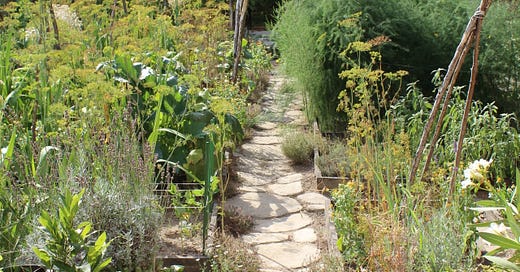


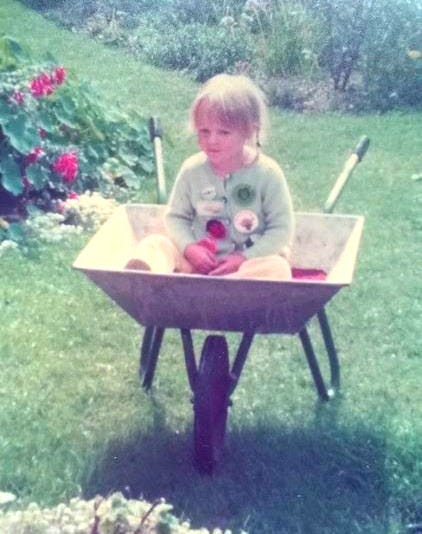
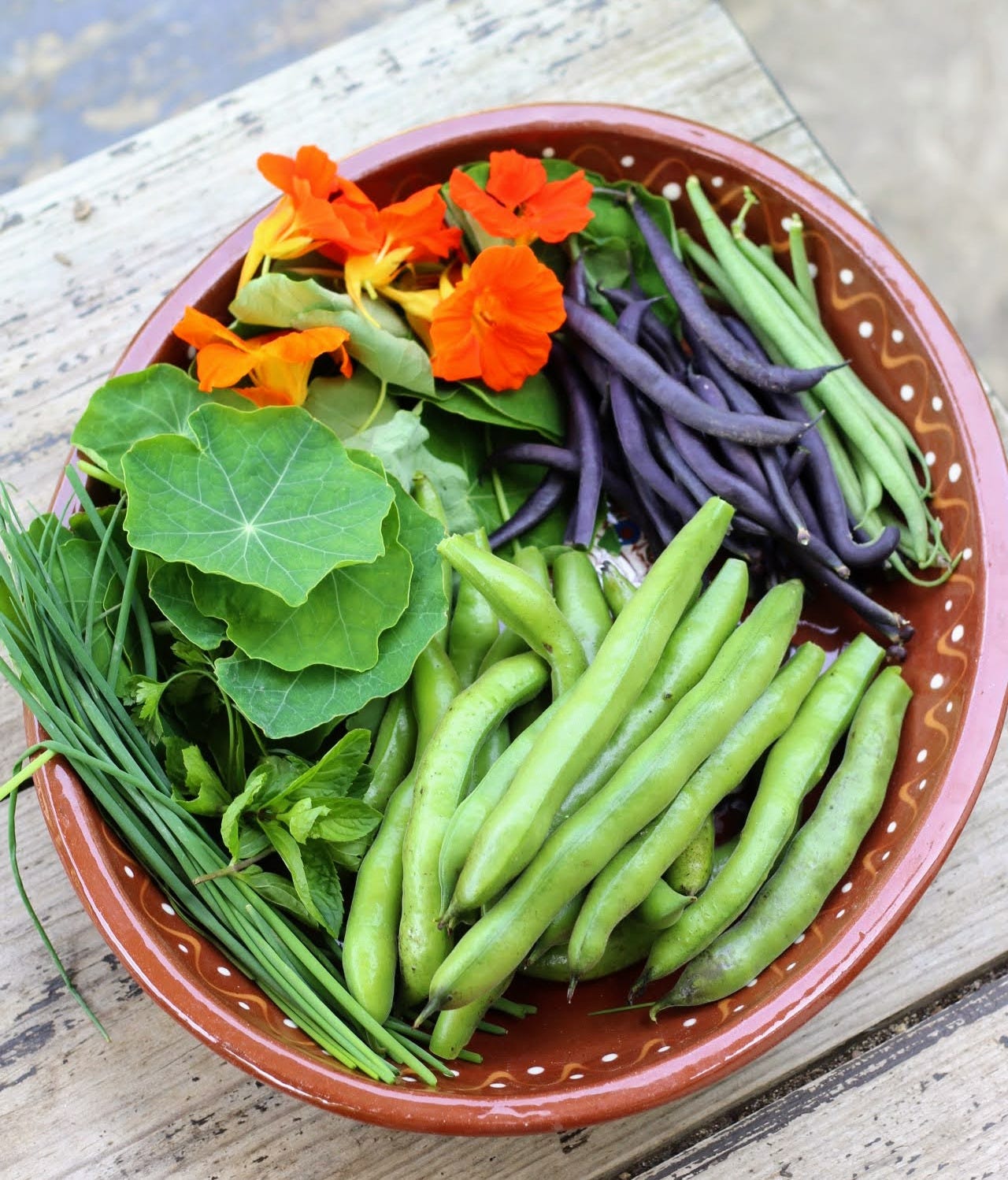
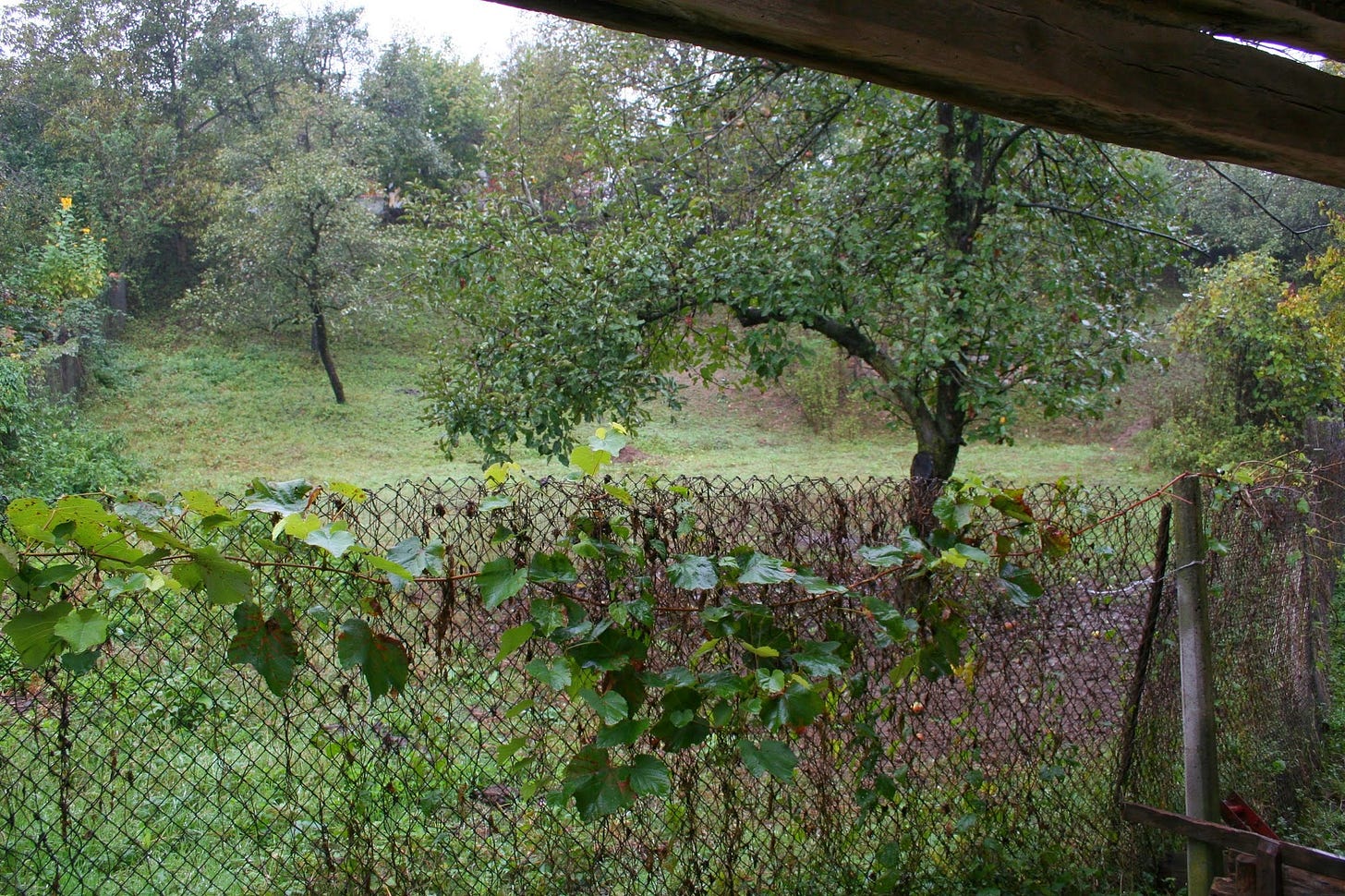


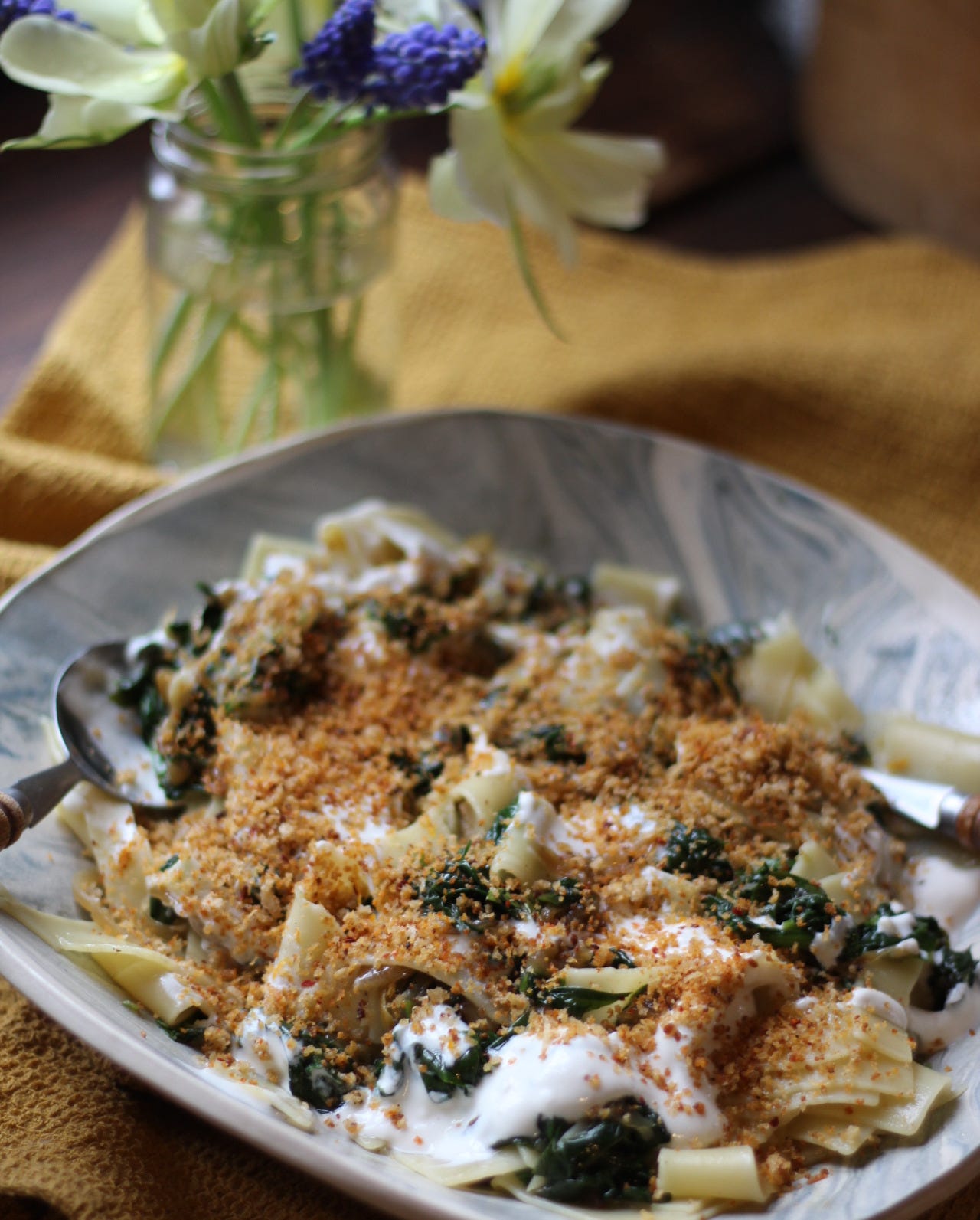
For the speedy midweek pasta, I should have stressed how important it is to use thick, full-fat yoghurt. (I make my own dairy-free soy and cashew yoghurt and never have a problem with it splitting when added to hot foods.) But if you're concerned about your yoghurt splitting, just take the pan off the heat when you're ready to add the yoghurt (everything else will be cooked through anyway). Then add your pasta and pasta water.
I love seeing what’s happening in your garden as we go into cold weather mode. It is an endless learning curve though. Just when you think you have it all worked out - it doesn’t!